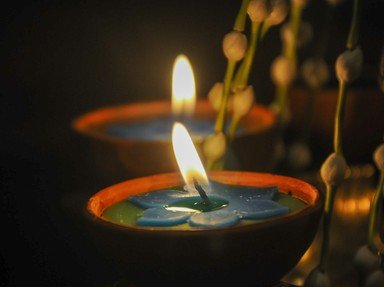Quiz Answer Key and Fun Facts
1. In Roman Catholicism the act of bending one knee in prayer goes by what term?
2. What do Buddhists call the short often repetitive words and phrases used to focus their concentration and awareness during meditation?
3. What is the common name for a Jewish prayer shawl?
4. What is the prime purpose of a Muslim prayer rug?
5. The practice of yoga is by definition always a form of prayer.
6. A basic tenet in Sikhism is to avoid cutting one's hair as a way to preserve the Creator's intention. What common article of head covering is traditionally worn by Sikh males in public?
7. Which of these types of expression is a common form of prayer in Native American cultures?
8. What is the common name for the herbs or plant resin that are ritually burned to produce scents and smoke in many religious practices?
9. In Wicca and other similar neopagan faiths the Great Rite is a ritual to invoke what type of magic?
10. In Tibet, prayer flags come in five traditional colors. What do the colors of these flags represent?
Source: Author
adam36
This quiz was reviewed by FunTrivia editor
CellarDoor before going online.
Any errors found in FunTrivia content are routinely corrected through our feedback system.
